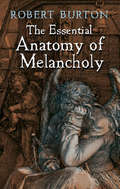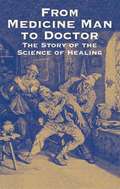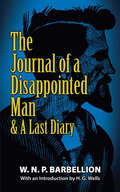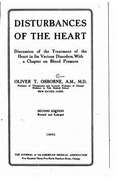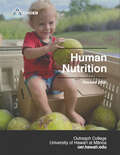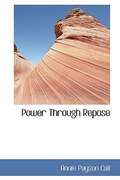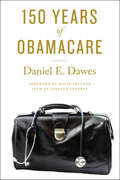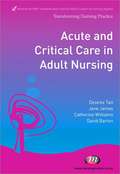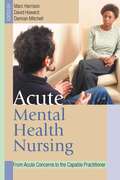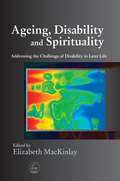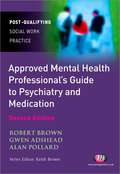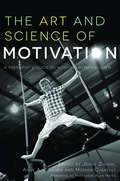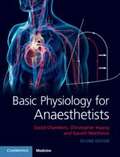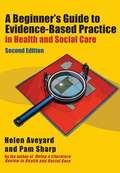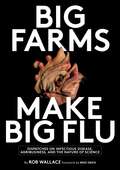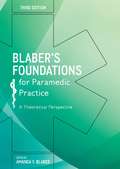- Table View
- List View
The Essential Anatomy of Melancholy
by Robert BurtonEnglish churchman and scholar Robert Burton (1577-1640) was a passionate student of medicine, history, literature, and science — the whole of human knowledge. This witty and eloquent genius devoted most of this life to writing The Anatomy of Melancholy, one of the richest, most inexhaustible books in the English language.Ostensibly an elaborately systematized medical treatise dealing with various morbid mental states — their causes, symptoms, and cures — the Anatomy is much more: a compendium of memorable utterances on the human condition in general, compiled from classical, scholastic, and contemporary sources. For this edition, the editors carefully selected passages of the most psychological and general interest, eliminating the nonessential material but retaining the incomparable humor, eccentric charm, imagination, and thought-provoking appeal of the original.In short, readers will find here the essence of Burton's vast book — the passages that, according to noted scholar W. H. D. Rouse, reveal the author's "eternal freshness, his own ingenuous interest, [and] his boyish delight in a good story."
From Medicine Man to Doctor: The Story of the Science of Healing
by Howard W. HaggardCompelling and informative, this overview of medical history traces modern-day medical practices from their roots in the ancient civilizations of Egypt, Greece, and Rome. Physician Howard W. Haggard — a popular lecturer, prolific author, and Yale professor — specialized in explaining health-related issues to ordinary people. This 1929 survey offers fascinating facts and anecdotes from around the world in its chronicles of the development of obstetrical methods, anesthesia, surgery, drugs, and other landmarks in the science of healing.The first chapters examine the treatment of child-bearing women throughout the centuries, from practices related to the legends of Aesculapius and Hygeia to the long battle against puerperal fever, the invention of obstetrical forceps, and the rise of anesthesia. A profile of the progress of surgery explores the violent opposition to early attempts at studying anatomy through human dissection, and the gradual adoption of antiseptic principles. Quarantine, vaccination, and a heightened public awareness are cited among the record of attempts to conquer plague and pestilence.Final chapters investigate faith healing through the ages and occult practices such as exorcism and the trade in holy relics; herb doctors and medieval apothecaries; the recognition of bacteria as a cause of infectious disease; and the eventual trend away from treatment and toward prevention.
The Journal of a Disappointed Man: & A Last Diary
by W.N.P. BarbellionPublished shortly before the author's death in 1919, The Journal of a Disappointed Man presents a remarkable memoir that addresses struggles with poverty, inadequate education, and the creeping paralysis of multiple sclerosis. Yet author W. N. P. Barbellion manages to write with uplifting eloquence and passion of his love for family, natural history, music, and literature. Told with a thoroughly modern voice, the unjustly overlooked Journal is reprinted here with its posthumous successor, A Last Diary. This edition features a thoughtful Introduction by H. G. Wells, who writes of the book's "exquisite beauty." W. N. P. Barbellion (1889–1919), whose real name was Bruce Frederick Cummings, was a naturalist who worked in the Entomology Department of London's Natural History Museum. Upon attempting to enlist in the British Army during World War I, he was diagnosed with multiple sclerosis. The discovery of his disease intensified the tenor of his journal-keeping, and his frank and articulate reflections on coping with a fatal illness remain a powerful testament to his life and struggles.
Disturbances of the Heart / Discussion of the Treatment of the Heart in Its Various Disorders, With a Chapter on Blood Pressure
by Oliver T. OsborneDisturbances of the heart, discussion of the treatment of the heart in its various disorders, with a chapter on blood pressure by Oliver T. Osborne. This book is a reproduction of the original book published in 1916 and may have some imperfections such as marks or hand-written notes.
Human Nutrition
by University of Hawai‘i at Mānoa Food ScienceThis textbook serves as an introduction to nutrition for undergraduate students and is the OER textbook for the FSHN 185 The Science of Human Nutrition course at the University of Hawai'i at Mānoa. The book covers basic concepts in human nutrition, key information about essential nutrients, basic nutritional assessment, and nutrition across the lifespan. <p><p>Revised 2022
Power Through Repose
by Annie Payson CallAs outspoken in his day as Richard Dawkins or Christopher Hitchens are today, American freethinker and author ROBERT GREEN INGERSOLL (1833-1899) was a notorious radical whose uncompromising views on religion and slavery (they were bad, in his opinion), women's suffrage (a good idea, he believed), and other contentious matters of his era made him a wildly popular orator and critic of 19th-century American culture and public life. As a speaker dedicated to expanding intellectual horizons and celebrating the value of skepticism, Ingersoll spoke frequently on such topics as atheism, freedom from the pressures of conformity, and the lives of philosophers who espoused such concepts. This collection of his most famous speeches includes the lectures: [ "The Gods" (1872) [ "Humboldt" (1869) [ "Thomas Paine" (1870) [ "Individuality" (1873) [ "Heretics and Heresies" (1874)
How and When to Be Your Own Doctor
by Isabelle A. Moser Steve SolomonDr. Isabelle A. Moser and Steve Solomon collaborated on How and When to Be Your Own Doctor. When Solomon reached his late thirties, he began looking for healthy alternatives. He met Moser and began the practice of a yearly fast to cleanse his body. This book contains their combined knowledge on healing. Topics include How I Became a Hygienist, The Nature and Cause of Disease, Fasting, Colon Cleansing, Diet and Nutrition, Vitamins and Other Food Supplements and The Analysis of Disease States--Helping the Body Recover.
150 Years of ObamaCare (PDF)
by Daniel E. DawesIn this groundbreaking book, health-care attorney Daniel E. Dawes explores the secret backstory of the Affordable Care Act, shedding light on the creation and implementation of the greatest and most sweeping equalizer in the history of American health care. An eye-opening and authoritative narrative written from an insider’s perspective, 150 Years of ObamaCare debunks contemporary understandings of health reform. It also provides a comprehensive and unprecedented review of the health equity movement and the little-known leadership efforts that were crucial to passing public policies and laws reforming mental health, minority health, and universal health.An instrumental player in a large coalition of organizations that helped shape ObamaCare, Dawes tells the story of the Affordable Care Act with urgency and intimate detail. He reveals what went on behind the scenes by including copies of letters and e-mails written by the people and groups who worked to craft and pass the law. Dawes explains the law through a health equity lens, focusing on what it is meant to do and how it affects various groups. Ultimately, he argues that ObamaCare is much more comprehensive in the context of previous reform efforts than is typically understood.In an increasingly polarized political environment, health reform has been caught in the cross fire of the partisan struggle, making it difficult to separate fact from fiction. Offering unparalleled and complete insight into the efforts by the Obama administration, Congress, and external stakeholders, 150 Years of ObamaCare illuminates one of the most challenging legislative feats in the history of the United States.
Acute And Critical Care In Adult Nursing (PDF)
by Desiree TaitThe assessment and management of patients who are critically or acutely ill, or showing signs of clinical deterioration, is a crucial nursing skill. This book will help adult nursing students to competently manage care of critically and acutely ill patients, and to recognise and deal with the early signs of deterioration. The book takes a practical real-life approach to care, with each chapter focussing on patients with specific problems, then interweaving the knowledge and skills needed to care for that patient, including the nurse's role and responsibilities, assessment, diagnosis, planning, management, related pathophysiology and collaborative team working.
Acute Mental Health Nursing: from Acute Concerns to the Capable Practitioner (PDF)
by Damian Mitchell Marc Harrison David HowardRecent mental health policy has focused on developing community-based services, while the reality remains that patients experiencing acute episodes of illness are mainly cared for in hospital. Acute Mental Health Nursing has been developed as a guide to the core knowledge and skills required for working in inpatient settings. Bringing together a vastly experienced and multi-professional team of contributors, the book covers core areas of practice including: assessmt, risk management, case management and integrated care pathways, observations, congnitive behavioural therapy, psycho-social interventions, medication management, user involvement, social inclusion, measurement of health and social functioning. Drawing on the latest developments in policy and planning, Acute Mental Health Nursing addresses issues which are specific to working in inpatient settings. It has been designed for use in training and is also an excellent source of reference for use in practice.
Ageing, Disability and Spirituality: Addressing the Challenge of Disability in Later Life
by Alan Niven Christine Bryden Christopher Newell Dagmar Ceramidas Eileen Mary Glass Elizabeth Mackinlay John Swinton Kirstin Robertson-Gillam Lawrence Mcnamara Lorna Hallahan Malcolm Goldsmith Matthew Anstey Rosalie Hudson Ruwan PalapathwalaThis collection examines theological and ethical issues of ageing, disability and spirituality, with an emphasis on how ageing affects people who have mental health and developmental disabilities. The book presents ways of moving towards more effective relationships between carers and older people with disabilities; ways in which to connect compassionately and beneficially with the person's spiritual dimension. The contributors highlight the importance of recognizing the personhood of all people regardless of age and of disability, whatever form it takes. They identify factors inherent in personhood and provide ways of affirming and promoting spiritual well-being for older people with disabilities. Valuable reading for practitioners in aged care, healthcare, chaplaincy, social and pastoral care, and diversional therapists, this book will also be of interest to older people, their families and friends.
The Approved Mental Health Professional's Guide to Psychiatry and Medication
by Robert Brown Gwen Adshead Alan PollardThis book is essential reading for all Approved Mental Health Professionals (AMHPs) and those students and practitioners on mental health Post-Qualifying awards. It covers the core competencies of the AMHP and how the use of medication fits within the roles of the mental health professional. Fully updated to include aspects of the recently amended Mental Health Act 1983, this guide shows how the law is applied to compulsory administration of medication, the law relating to consent to treatment and the relevance to the European Convention on Human Rights.
The Art and Science of Motivation: A Therapist's Guide to Working with Children
by Anne Poulsen Jenny Ziviani Monica CuskellyPlacing motivation at the heart of all encounters and therapeutic activities, this book presents a groundbreaking, evidence-based model for working with children, including those with physical disabilities, learning disabilities and emotional and behavioural difficulties. Drawing on Self-Determination Theory (SDT), the authors describe this innovative paradigm - the model of Synthesis of Child, Occupational Performance and Environment - in Time (SCOPE-IT) - and explain how it can be used to sustain the child's motivation and active involvement in the therapeutic process. They suggest ways of using language and of structuring and working with the environment to maximise engagement and autonomy and achieve the best possible treatment outcomes. The challenges professionals may face when working with children are also clearly addressed, and engaging case studies and photographs place the key theoretical concepts in a richly human and personal context. Combining accessible theory with a wealth of tools and strategies for practice, this book is essential reading for all those working therapeutically with children, including occupational therapists, speech and language therapists, psychologists and psychotherapists.
The Art and Science of Motivation: A Therapist's Guide to Working with Children (PDF)
by Anne Poulsen Jenny Ziviani Monica CuskellyPlacing motivation at the heart of all encounters and therapeutic activities, this book presents a groundbreaking, evidence-based model for working with children, including those with physical disabilities, learning disabilities and emotional and behavioural difficulties. Drawing on Self-Determination Theory (SDT), the authors describe this innovative paradigm - the model of Synthesis of Child, Occupational Performance and Environment - in Time (SCOPE-IT) - and explain how it can be used to sustain the child's motivation and active involvement in the therapeutic process. They suggest ways of using language and of structuring and working with the environment to maximise engagement and autonomy and achieve the best possible treatment outcomes. The challenges professionals may face when working with children are also clearly addressed, and engaging case studies and photographs place the key theoretical concepts in a richly human and personal context. Combining accessible theory with a wealth of tools and strategies for practice, this book is essential reading for all those working therapeutically with children, including occupational therapists, speech and language therapists, psychologists and psychotherapists.
Basic Physiology For Anaesthetists (PDF)
by David Chambers Christopher Huang Gareth MatthewsEvery trainee in anaesthesia requires a thorough understanding of basic physiology and its application to clinical practice. Now in its second edition, this comprehensively illustrated textbook bridges the gap between medical school and reference scientific texts. It covers the physiology requirements of the Primary FRCA examination syllabus. Chapters are organised by organ system, with particular emphasis given to the respiratory, cardiovascular and nervous systems. The practical question-and-answer format helps the reader prepare for oral examinations, while 'clinical relevance' boxes translate the physiological concepts to clinical practice. This new edition has been thoroughly updated and revised throughout, and includes six new chapters, including the physiology of the eye, upper airway and exercise testing. It provides junior anaesthetists with an essential 'one stop' physiology resource.
A Beginner's Guide To Evidence-based Practice In Health And Social Care
by Helen Aveyard Pam SharpHave you heard of 'evidence based practice' but don't know what it means? Are you having trouble relating evidence to your practice? This is the book for anyone who has ever wondered what evidence based practice is or how to relate it to practice. Fully updated in this brand new edition, this book is simple and easy to understand - and designed to help those new to the topic to apply the concept to their practice and learning with ease. The book provides a step by step guide to what we mean by evidence based practice and how to apply it. This new edition features: Additional material on literature reviews and searching for literature Even more examples for health and social care practice Extra material on qualitative research and evidence based practice Expanded section on hierarchies of evidence and how to use them A Beginner's Guide to Evidence Based Practice in Health and Social Care is key reading for everyone involved in looking at and applying evidence in healthcare.
Big Farms Make Big Flu: Dispatches On Influenza, Agribusiness, And The Nature Of Science
by Rob WallaceThanks to breakthroughs in production and food science, agribusiness has been able to devise new ways to grow more food and get it more places more quickly. There is no shortage of news items on hundreds of thousands of hybrid poultry—each animal genetically identical to the next—packed together in megabarns, grown out in a matter of months, then slaughtered, processed and shipped to the other side of the globe. Less well known are the deadly pathogens mutating in, and emerging out of, these specialized agro-environments. In fact, many of the most dangerous new diseases in humans can be traced back to such food systems, among them Campylobacter, Nipah virus, Q fever, hepatitis E, and a variety of novel influenza variants. Agribusiness has known for decades that packing thousands of birds or livestock together results in a monoculture that selects for such disease. But market economics doesn't punish the companies for growing Big Flu—it punishes animals, the environment, consumers, and contract farmers. Alongside growing profits, diseases are permitted to emerge, evolve, and spread with little check. “That is,” writes evolutionary biologist Rob Wallace, “it pays to produce a pathogen that could kill a billion people.” In Big Farms Make Big Flu, a collection of dispatches by turns harrowing and thought-provoking, Wallace tracks the ways influenza and other pathogens emerge from an agriculture controlled by multinational corporations. Wallace details, with a precise and radical wit, the latest in the science of agricultural epidemiology, while at the same time juxtaposing ghastly phenomena such as attempts at producing featherless chickens, microbial time travel, and neoliberal Ebola. Wallace also offers sensible alternatives to lethal agribusiness. Some, such as farming cooperatives, integrated pathogen management, and mixed crop-livestock systems, are already in practice off the agribusiness grid. While many books cover facets of food or outbreaks, Wallace's collection appears the first to explore infectious disease, agriculture, economics and the nature of science together. Big Farms Make Big Flu integrates the political economies of disease and science to derive a new understanding of the evolution of infections. Highly capitalized agriculture may be farming pathogens as much as chickens or corn.
Blaber’s Foundations for Paramedic Practice: A theoretical perspective (UK Higher Education OUP Humanities & Social Sciences Health & Social Welfare)
by Amanda BlaberThis bestselling undergraduate level book is an ideal resource for student paramedics looking for an excellent introduction to the main theoretical subjects studied in paramedic courses, and links practice issues to the all-important theory base. The chapters bring to life a wide variety of academic subjects, making complex subjects easily readable and encouraging reflection on how theory fits with practice. This 3rd edition has been expanded throughout and includes five new chapters on research and evidence-based practice, human factors affecting paramedic practice, developing resilience, caring for people with dementia, and public health perspectives.
Bones of the human right foot (UEB contracted)
by Adrian FarnsworthThis image shows the bones of the human foot shown from above. There is a locator dot shown, which will be at the top left of the page when the image is the correct way up. The toes are at the top of the page and the heel bone is at the bottom centre of the page. The big toe is at the top left and is made of two bones. The other four toes to the right are each made of three bones. Down from the toes are five long bones and then a number of square and rounded bones that form the body of the foot. The two bones just up from the heel are where the lower end of the long bones of the lower leg attach. They would come straight up towards you.
